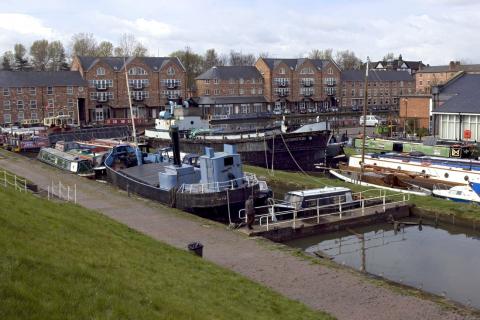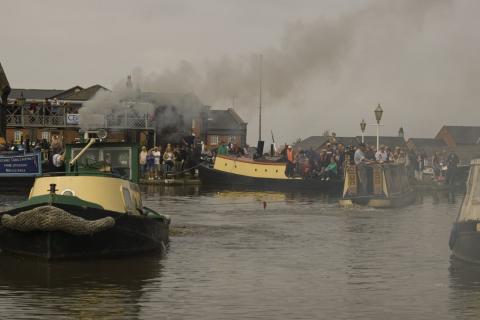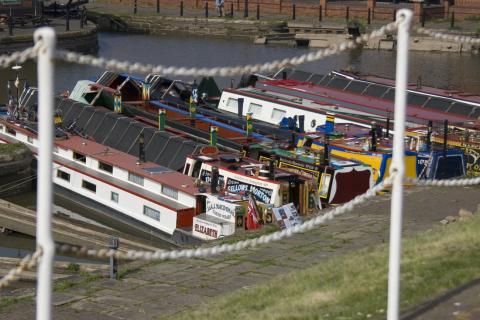Breaking up the boats?
October 2017 - In what C&RT describes as the largest movement of historic boats ever 11 historic vessels will be lifted from the canal basin at the Ellesmere Port waterways museum and placed in a new dry store – but nobody knows how many will survive intact, writes Peter Underwood.
Today (October 10) the historic narrow boats and barges, dating from the late 1800s to the 1950s, with the majority on the National Historic Ships Register and ranging in size from 33 to 72 feet will be lifted, using a massive crane.
Canal & River Trust says it is the UK’s largest ever movement of historic vessels but Head of Museums for the Trust Graham Boxer admits: “There’s no denying they are deteriorating and unfortunately they will not all be in a condition to be conserved. Our priority is to get them into the stable environment of our new dry store. Each one will be treated according to its construction and materials. Some are built from wood, others steel and even concrete, so there is no one-size fits all approach. These boats are now old and fragile and have reached the end of their lives as operational and outdoor exhibits.”
The boats include former horse drawn barges, narrowboats and an icebreaker. From Phoebe, a 1900s ‘white van’ of the waterways and rare example of a once common working boat to Aleida heroine of the Fenland Floods; and the massive chalk carrying barge to the iron plated ice breaker Marbury.
Each boat is an important part of the country’s waterway heritage. Many have been adapted over the years, sometimes from working to pleasure use. Ferret began life in the 1920s as a working narrow boat, loving converted for leisure use by the Clark family in the 1970s. Her story is already being told in the museum.
They have come to the museum (formerly run by the Boat Museum Trust) over the decades since it opened in 1976. Some were former working boats owned by British Waterways, whilst others were acquired by the museum from private owners
Since the 1980s C&RT says lack of money for conservation, and suitable storage space, has meant that the gradually deteriorating boats have had to remain in the water, then seen as the best way of conserving them.
An Arts Council England grant of over £300k, has allowed the Canal & River Trust to create a newly developed dry store at the museum, where the conservation team will be able to fully assess each vessel.
C&RT says: “Experts will consider several options depending on the condition and historical significance of each boat. These include whole or partial conservation or, where this is not possible, deconstruction. Boats will also have a 3D image created so that, even if the actual vessel has been deconstructed, an accurate record is captured for future study.
Graham Boxer explains: “I am relieved that we are finally able to start moving these boats. In the 1980s it was felt that the most appropriate way to conserve them was to keep them in the water, which is why some were sunk intentionally, while others have just leaked water over the years. Now we know that the best way to conserve them is to remove them from the water.
“Every one of these vessels has its own story to tell. It’s our aim to ensure that these stories are told in the best, and most appropriate way so that we can preserve this important history of the waterways.
“And by using the latest conservation thinking and techniques we are future proofing our historic collection. It’s also our mission to bring this unique collection to a wider audience and we are already using 21st century technology (including Augmented Reality) to make our waterways history relevant and exciting to generations of future visitors.”
Photos: (1st, 2nd, 3rd) Ellesmere Port museum at festival time, (4th) Head of Museums for the Trust Graham Boxer.









